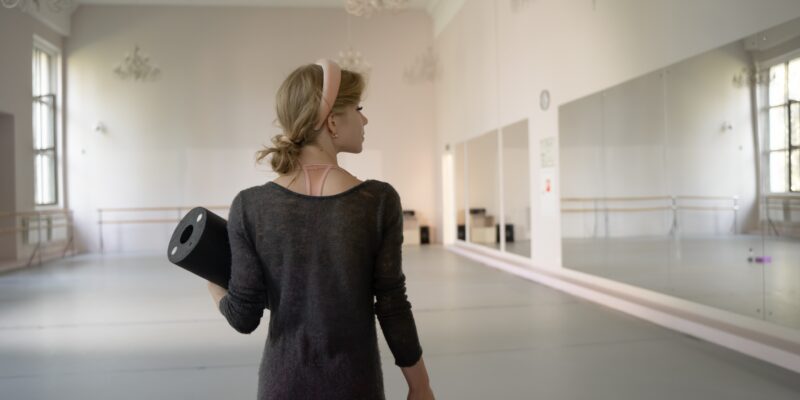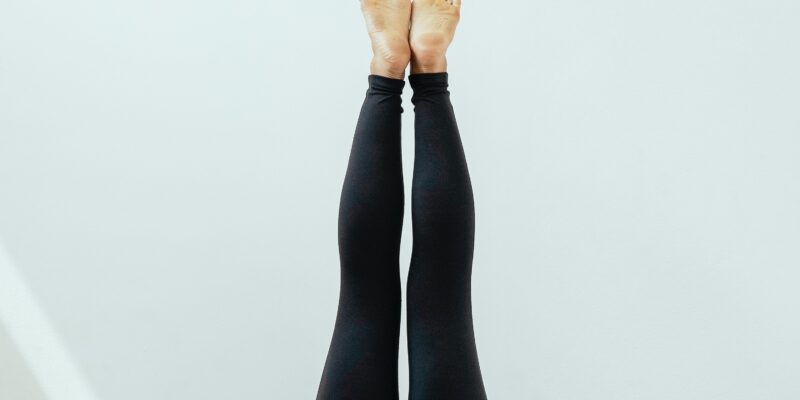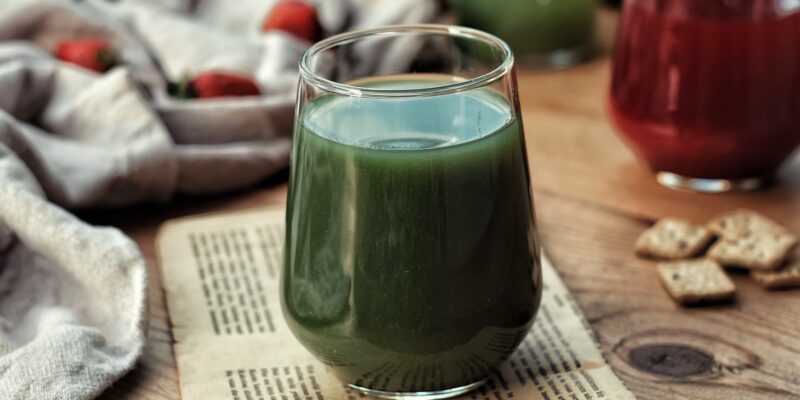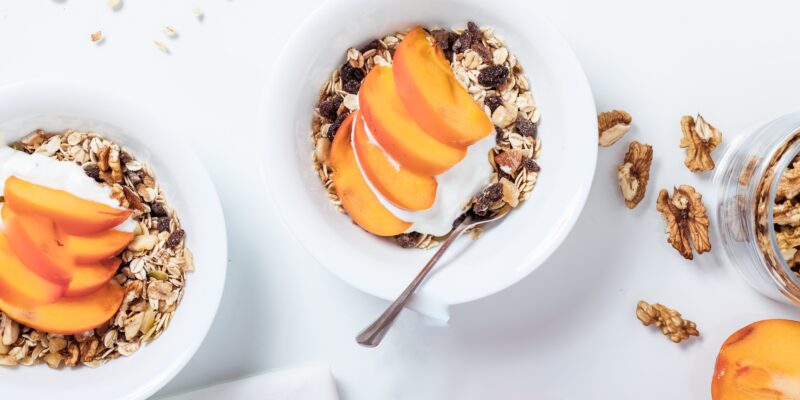Weight loss, muscle gains, and fat loss make up the most common desires for dancers looking to construct body goals. While we know that restrictive dieting isn’t a sustainable path toward these goals, it’s still a tempting route when wanting to look different. This is especially true in a culture that fixates on specific body ideals. Regardless, is it okay for dancers to have body goals? And can they strive for those goals healthfully? Or do these goals require some bit of restrictive control over food and exercise?
Read More...5+ “Clean” (Diet) Foods To Start Enjoying …Again
I once thought that a veggie-loaded salad (dressing on the side) was sufficient for lunch. Not only did it check the boxes of a “healthy” meal, but it also filled me physically and, according to what I thought was right for a dancer, gave me the reassurance of control— the hope that if I continued […]
Read More...Asking AI For Nutrition Advice- What You Should Know
Artificial intelligence (AI), as a mainstream medium for information, is quickly becoming the norm not just for everyday life, but also, in healthcare. AI for nutrition advice, from calorie targets to meal plans, has gained popularity due to its accessibility. But AI comes with major risks and limitations. This article will uncover everything you should be aware of when relying on chatbots, ChatGPT, and other AI-driven tools for nutrition advice.
Read More...5 Ways Dancers Can Prep for Nutcracker Auditions
Nutcracker is an exciting time— for some dancers, it’s the biggest performance of their year. For others, it’s a time of traditions and a balancing act between a crazy busy performance season and time off for the holidays. But alongside this excitement comes the road leading to it, and it starts with your audition. Chances […]
Read More...Dancers with ADHD- tackle the challenges of food and nutrition
Attention-deficit/hyperactivity disorder (ADHD) is a neurodevelopmental disorder— a form of neurodivergence characterized by a shift in how the brain thinks and processes information. People with ADHD often experience an ongoing pattern of inattention, hyperactivity, and/or impulsivity that interferes with their ability to function. Dancers with ADHD can experience a variety of challenges in the studio. […]
Read More...Help! My health & nutrition assignment is triggering
In school, classes and assignments centered on the topic of nutrition can offer valuable opportunities for learning about the role of food on energy, sports performance, and disease management, to name a few. But when these assignments involve practices like food tracking and calorie counting, they can be triggering to disordered eating and self-doubt. The bombardment of diet culture can be challenging if you’re simultaneously recovering your relationship with food. In this article, we’ll uncover how to move through these assignments with less stress and more ease.
Read More...Success for your new dance season
A new dance season is among us— new goals, higher expectations, and countless possibilities for growth. But with each new season comes a unique set of challenges. Whether you’re joining a new school, beginning a renewed company contract, or returning to your usual spot at the barre, a sense of overwhelm is likely. Regardless, we can look forward to this new season as one of opportunity. Evaluating your expectations and setting realistic goals is a major part of the process and this article will help you do just that.
Read More...A Dancer’s Back-To-School Checklist
Back-to-school is approaching and dancers are gearing up to dive back into their rigorous schedules— a balance of dance and academic coursework is the norm. For dancers returning home from summer intensives, fatigue, and injury might be the reality. As a dietitian for dancers, August is one of my busiest seasons. A spike in stress […]
Read More...Chia Seed Pudding
Chia seed pudding is a versatile, nutrient-dense snack to support a dancer’s rigorous training and recovery needs. It’s a fantastic addition to any dancer’s fuel plan. In this blog post, you’ll learn how to craft a basic chia seed pudding, along with delicious flavor combinations to get you started.
Read More...How to support a friend through disordered eating
When you suspect that a dance friend is struggling with disordered eating or an eating disorder, it can be challenging to know how to offer effective support. Fears of “saying the wrong thing” leaves many dancers at a loss for words. And while the conversation is one to tread lightly, avoidance can drive even the closest of friends further apart. If you suspect a dance friend is struggling with disordered eating or an eating disorder, here’s what to do.
Read More...Comparisons in dance: your ultimate guide
Comparisons in the studio are, unfortunately, a common obstacle facing many dancers. Constantly comparing their skills, progress, and achievements to fellow dance peers— it can feel like an uphill battle for dancers to not compare themselves to others. This mindset isn’t just detrimental to a dancer’s self-esteem, it can also impede their creativity and overall performance potential. In this article, we explore why dancers are vulnerable to the comparative mindset, along with practical strategies to overcome it. The goal is to not strive for what feels impossible, but rather, to foster productive behaviors and a more fulfilling experience both in the studio and at mealtimes.
Read More...A Dancer’s Guide to Stress, Fatigue, & Overwhelm
It’s common for dancers to find themselves exhausted mentally, physically, and emotionally. Balancing a packed dance schedule with academic coursework is hard enough. Chronic fatigue can be detrimental to your health, well-being, and your ability to perform to your greatest potential. While a dancer’s schedule is notoriously difficult to manage, you owe it to your mind, body, and soul to find moments to breathe.
Read More...How to stop counting calories
Dancers have long been counting calories in attempts to gain a sense of comfort in micromanaging the amount they’re eating. But with popular diets recommending calorie targets that are much too low for even the inactive non-dancer, counting calories can be a gateway into more severe disordered eating. If you’re tired of the constant calorie calculations and want to break free from this restrictive habit, here are five steps to help.
Read More...Misleading marketing
Marketing is a powerful tool in shaping our purchasing decisions. But when it comes to food and nutrition, it is crucial to be aware of marketing phrases that are particularly deceptive. Those that might seem harmless, but in reality, mislead us into developing restrictive food rules, food guilt, and worse, disordered eating. In this blog post, we’ll explore the most common marketing phrases that dancers should recognize and steer clear of in their mealtime decisions.
Read More...What is staying power? How can it leverage our meals?
The staying power of a meal or snack refers to how long it keeps you satisfied and energized before feeling hungry again. Simply put, your meal’s staying power helps to support feelings of fullness— at least until your next opportunity to eat. In this article, we’ll uncover specific tips for leveraging your meal’s staying power to support energy and metabolic functioning.
Read More...What Is A Healthy Body Weight?
How do we measure a healthy body weight? Body weight, as a measured number, encompasses a spectrum of components of body composition.
Read More...A Dancer’s Complete Guide to Hormone Balance
For dancers, balanced hormones support strong bones. These ten foods will boost your hormone health. If you’re looking to support hormonal balance, start by adding these foods to your next grocery list.
Read More...Detox for Dancers- will a cleanse help?
Dancers are known for their discipline and dedication to their craft. Maintaining a strong, agile body is essential for their performance on stage. However, undeniable food and body ideals can lead dancers to explore drastic measures, such as cleanses and detoxes, in pursuit of rapid weight loss or supposed “detoxification” methods. In this blog post, we will explore why dancers should avoid cleanses and detoxes, and uncover how to embrace a more inclusive approach to nourishing their bodies, along with The Healthy Dancer® Diet Detox [FREE] 5-Day Challenge.
Read More...A Dancer’s Guide to Digestive Health
For dancers, bloating involves stomach discomfort that translates into difficult decisions around food. Interestingly, research shows that those who struggle with disordered eating and/or eating disorders might also be more prone to struggling with digestive disorders and the discomfort that goes along with them.
Read More...10 Things I Wish I Knew Before My Summer Dance Intensive
For an aspiring dancer, attending a summer intensive can be an exhilarating and transformative experience. Some of my favorite dance memories come from the various intensives I was fortunate to attend. But there are certain things that, in hindsight, I wish I had known before embarking on this exciting journey. I’ve previously discussed how dancers […]
Read More...




















